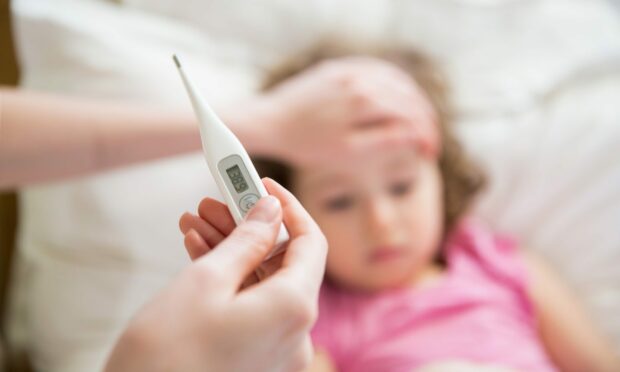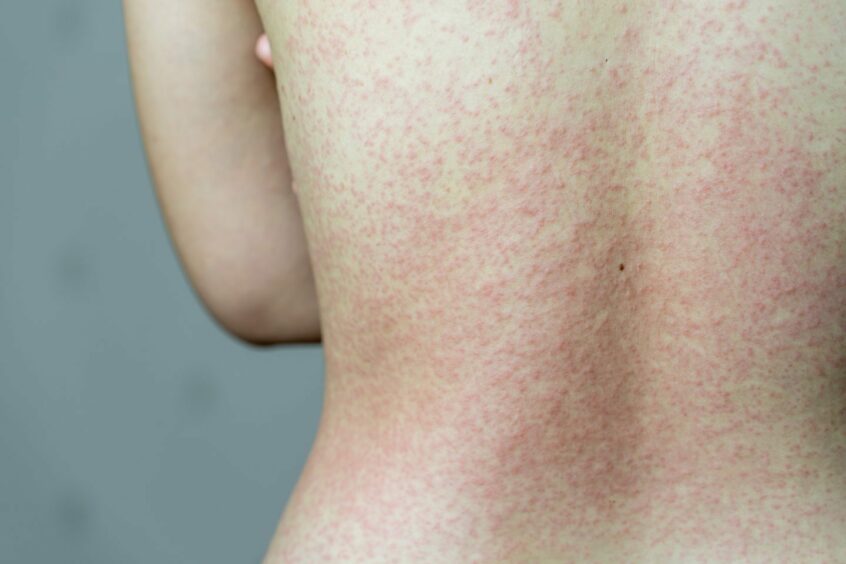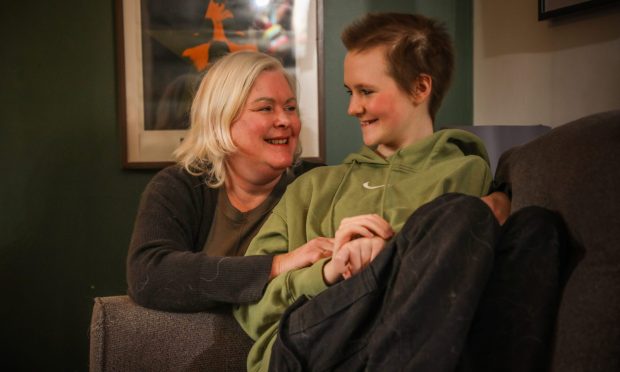Parents in Tayside and Fife are being urged to look out for symptoms of Strep A in their children as case numbers rise.
Public Health Scotland (PHS) confirmed 13 cases of Strep A in children under 10 years have now been identified in Scotland – an increase from eight on Monday.
There have been 25 cases reported overall across the country.
Neither NHS Tayside or NHS Fife have confirmed cases in the area.
And speaking to BBC Radio Scotland, Health Secretary, Humza Yousaf, reassured parents there is no shortage of antibiotics needed to treat Strep A in Scotland.
But parents are understandably concerned about an outbreak after reading on social media about local children who have Strep A.
Reports of cases have also been circulating at schools in both Dundee and Angus.
One Dundee parent said: “As a parent of two children, it is concerning to hear that kids are catching Strep A locally – particularly during a cold snap, when illnesses seem to spread more easily.
“I’m hopeful the steps being taken to make people aware of the infection will be enough to ensure no children fall seriously ill.
“But I’m certainly keeping an eye out for any symptoms in my own children and would encourage other parents to do the same.”
Another local parent said Strep A is the main thing people are speaking about at the school gates.
‘School seemed quieter than normal’
The dad, who asked not to be named, said: “It’s a horrible dilemma for everyone. No one wants to panic, especially as we’re told cases are still low in Scotland.
“But no one wants to put their child at risk, and there seem to be so many bugs going about just now.
“The holidays are coming up and I have seen plenty of people discussing online whether they should just keep kids off until then and hope that it all blows over.
“I doubt many will. But our school seemed quieter than normal this morning.”
What is the situation in Scotland?
At least nine children in the UK have reportedly died from the infection.
Public Health Scotland said infections had been rising since October, but advised complications from the illness are ‘rare’.
The Streptococcus bacteria is common and often only cause minor illnesses, but can also lead to the likes of impetigo and scarlet fever.
In very rare cases, it can move elsewhere in the body and cause life-threatening Invasive Group A Streptococcal (IGAS) infections.
Thirteen of these IGAS cases have been identified in children under 10 in Scotland so far. PHS says no deaths in this age group have been reported in Scotland this season.
What are the symptoms of Strep A?
The illness is caused by the bacteria group A streptococci. It is spread by contact with an infected person, or contact with infected skin lesions.
Common symptoms of a Strep A infection include:
- Headache
- Sore throat
- High temperature
- A skin rash made up of raised pink or purple spots, which feels like sandpaper to the touch.
- Swollen tonsils with white patches.
- Swollen neck glands.
In very rare occasions, the bacteria can get into the bloodstream and cause IGAS. Symptoms include:
- High fever.
- Severe muscle aches.
- Pain in one area of the body.
- Redness at the site of a wound.
- Vomiting or diarrhoea.
PHS says cases of Strep A usually increase during the winter. The last time significant numbers of cases were reported was in the 2017/18 season.
Peaks can occur every three to four years but Covid social distancing measures may have interrupted this cycle and explain the current increase being observed.
‘Complications are rare’
Dr Nick Phin, Director of Public Health Science at PHS, said: “The bacteria causing scarlet fever, and related infections, is usually found in the throat and on the skin.
“We would, therefore, encourage adults to ensure children wash their hands frequently with soap and water, and to cover their mouth and nose with a tissue when they cough or sneeze and then put the used tissue in the bin.
“These simple actions can help to reduce the spread of common infections like Group A strep.
“If your child is showing signs of scarlet fever, please seek advice from a health professional as most cases respond promptly to early treatment with antibiotics.
“PHS continues to work closely with NHS Boards, as well as public health colleagues across the UK, to monitor the situation.”
The UK Health Security Agency (UKHSA) advises those who come down with the illness to exclude themselves from nursery, school or work for at least 24 hours after they start antibiotic treatment.
This avoids spreading the illness to other children and adults.
NHS Tayside and NHS Fife both advised PHS were taking the lead on public updates about Strep A.













Conversation